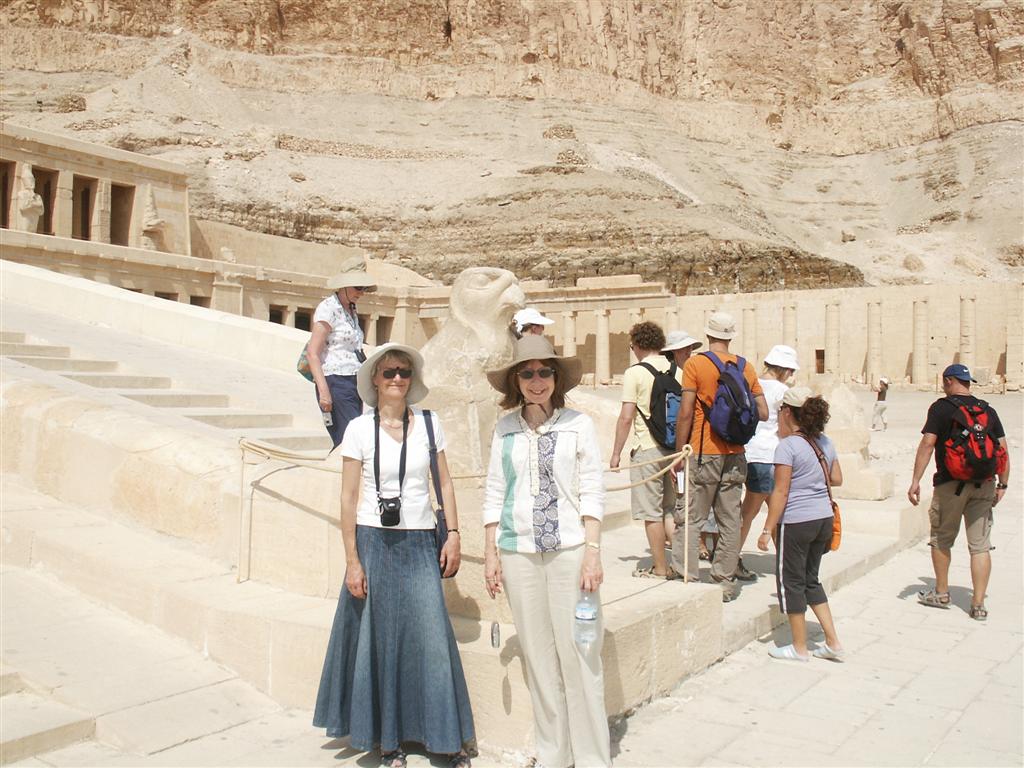Queen Hatshepsut’s Mortuary Temple

From a distance, Queen Hatshepsut’s Mortuary temple built into the base of the sheer cliffs is one of the most memorable sights in Egypt, second only to the Pyramids at Giza (IMHO).
The Second Terrace. Pharaohs by definition are Kings, so Queen Hatshepsut needed to impress the population that she had full Divine approval to reign. This temple and her additions to the temple at Karnak, among other places, were designed to do just that.
Originally these terraces had a certain amount of shade, with the lower terrace having well watered gardens with trees. Unfortunately, no shade here for Ann & Jo.


Hatshepsut was the wife of Tuthmosis II, who died before she bore him a son. Rather than step aside, the plucky queen made herself co-regent of the young Tuthmosis III and then effectively ruled Egypt as Pharaoh, with Tuthmosis III, not really getting a look-in.
You don’t usually get statues of women with beards, as these representations of the queen show.
These thin plaited beards are associated with Pharaoh’s statues. Apparently when they curl up at the end, as these do, they indicate that the Pharaoh is deceased. Maybe an earlier version of “curling up one’s toes”?


Some of the decorations are particularly fine. This lively scene on the left records an expedition to the country of Punt. A lot of Egypt’s wealth came from this region, modern day Somalia.
On the right Tuthmosis III gives wine to God Sokaris in the Anubis Chapel.


With Jo by the Inner Sanctuary. We are both looking a bit exhausted in the heat.
Legend has it that there is a tunnel connecting the temple to the nearby Valley of the Kings.
Adjoining Queen Hatshepsut’s temple is the even older one – by 500 years – of Mentuhotep I. Unfortunately his temple was a pyramid on stilts, which over time has collapsed, leaving little evidence of what it looked like.

The Temple was also known as Djeser-Djeseru, “Splendour of Splendours”! Not surprising really.

Return to Theban Necropolis
